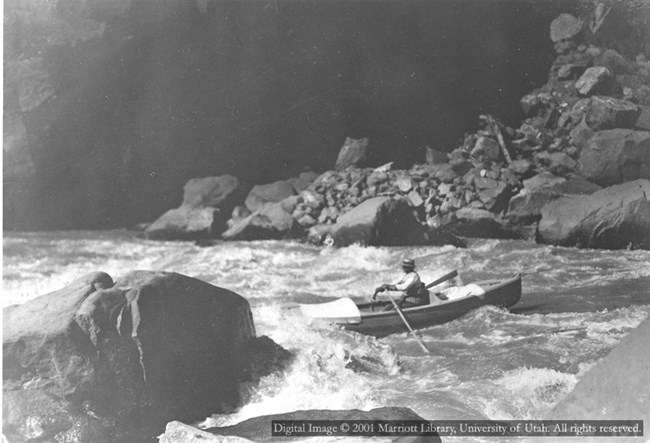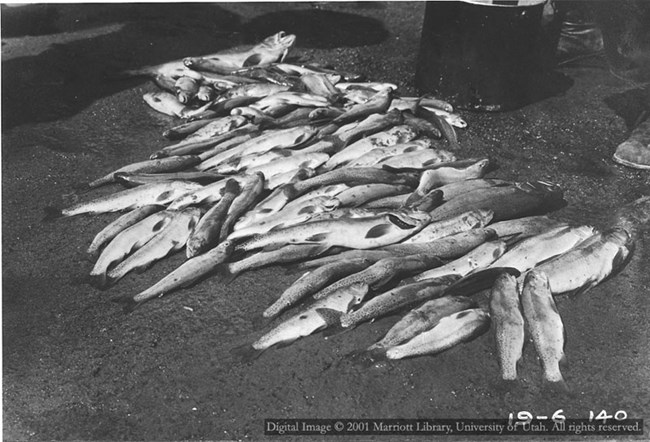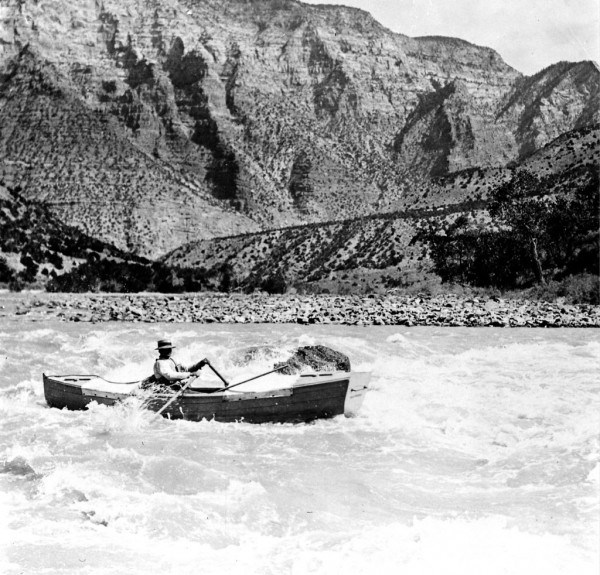
Marriott Library University of Utah Special Collections However, his most well-known adventure was guiding the Galloway/Stone expedition, repeating his earlier trip down the Green, all the way through the Grand Canyon. Galloway first caught the attention of Julius Stone, a wealthy financier from Ohio, while working for the Hoskaninni Mining Company in 1899. Stone had the idea for trip of a lifetime: make the first known descent of the Green and Colorado Rivers for pure sport, though some historians ascribe this feat to George Flavell. 
J. Willard Marriott Library, University of Utah Despite the improved watercraft, many of the rapids in the Canyon of Lodore proved difficult for the inexperienced oarsmen. They often unloaded the boats and portaged around while Galloway ran the rapids on his own. The expedition marveled at the beauty of the canyons including Steamboat Rock and stopped for a fishing trip at Jones Creek, where they claimed to catch 98 fish. 
Grand Canyon National Park archival photo Galloway’s longest-lasting contribution was probably the way he navigated rivers. Instead of rowing with his back to the rapids as Powell had done, he turned around and rowed stern first into rapids. This allowed him to see a particular rapid's challenges head-on and have increased control over the boat. Though a simple change, it revolutionized river running and laid the foundation for current rafting techniques. 
American Southwest Virtual Museum |
Last updated: September 1, 2024
